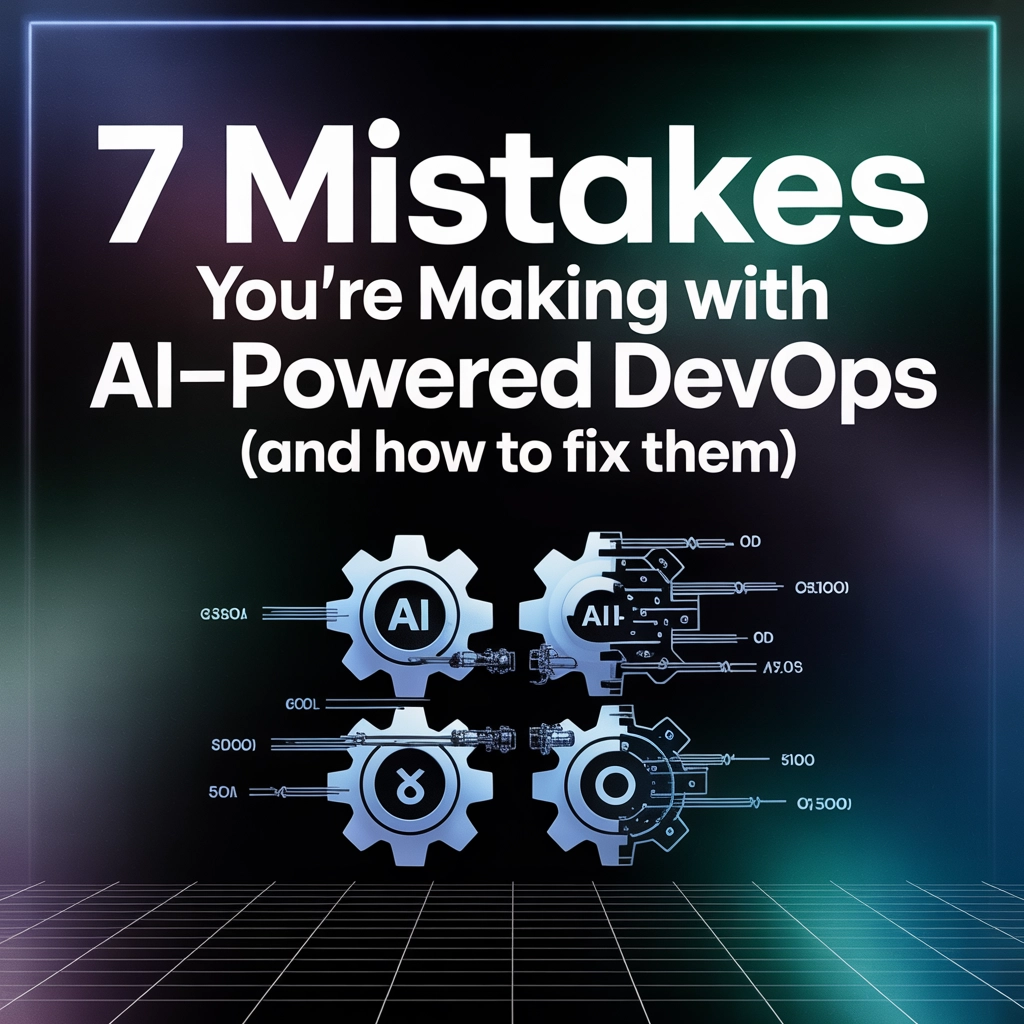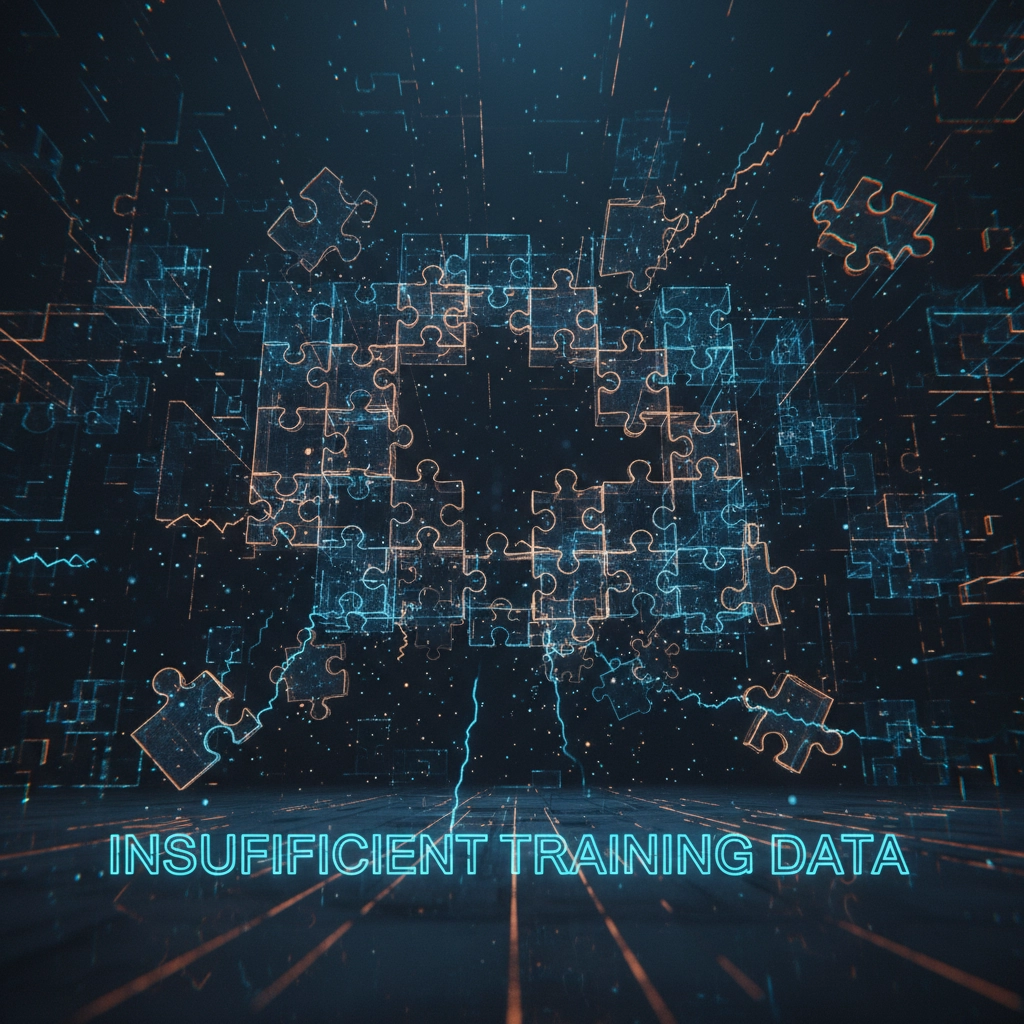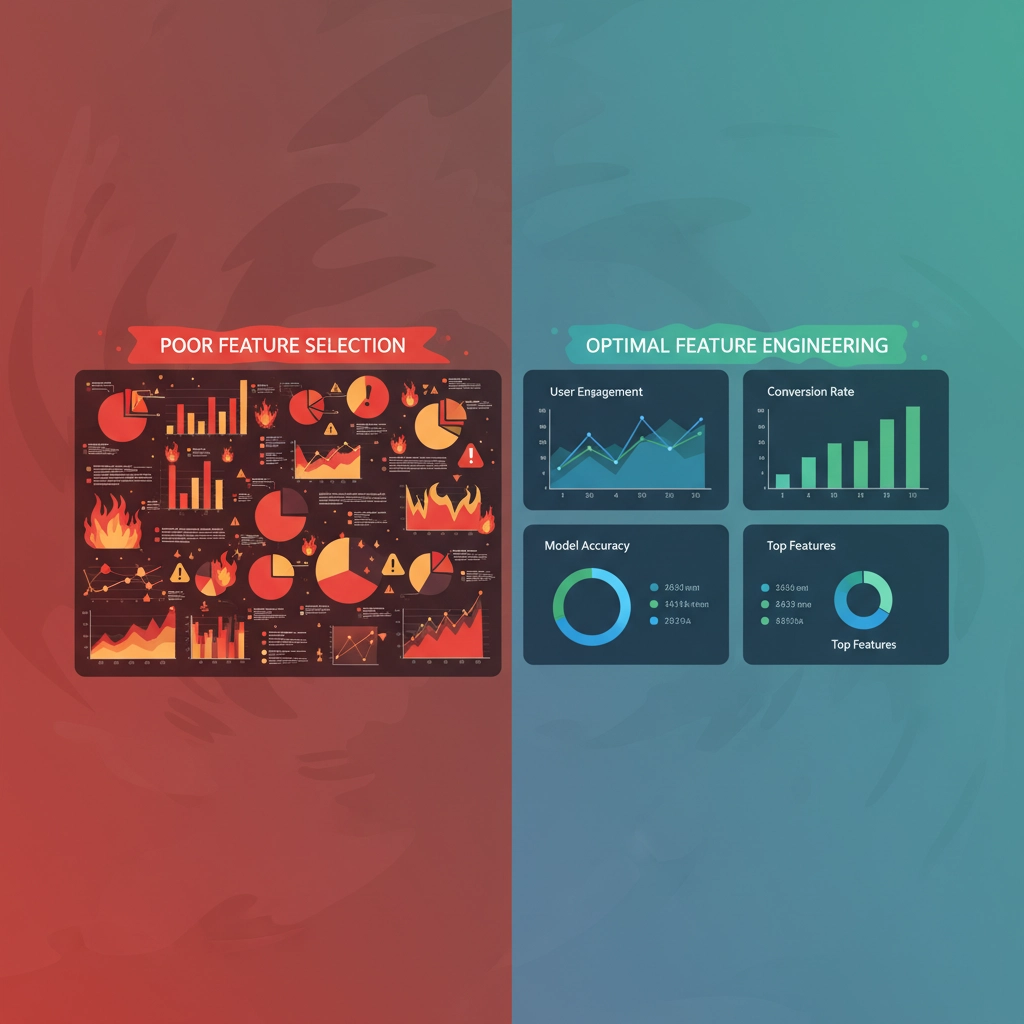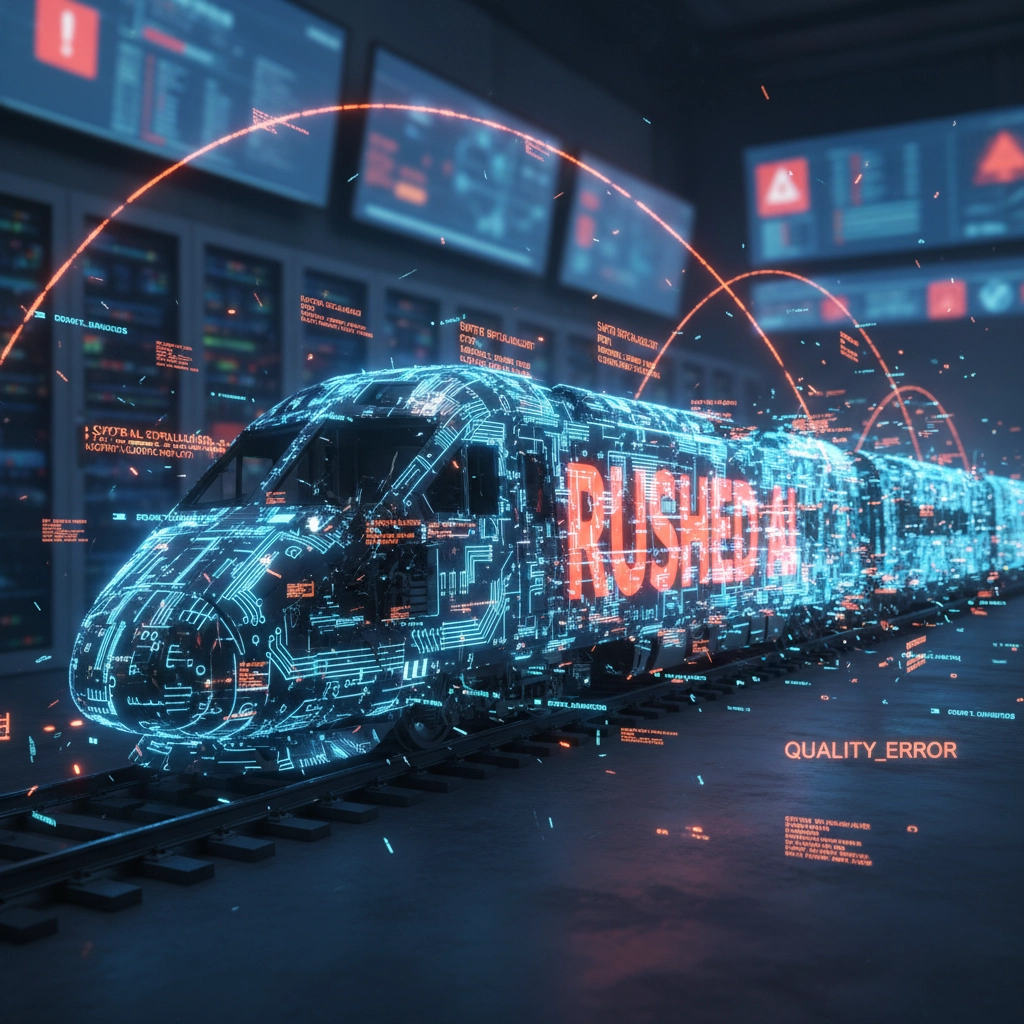DevOps Articles
Curated articles, resources, tips and trends from the DevOps World.
7 Mistakes You're Making with AI-Powered DevOps (and How to Fix Them)

AI-powered DevOps represents a transformative shift in how organizations manage software development and deployment workflows. However, implementation often falls short of expectations due to fundamental mistakes that undermine system effectiveness. These errors range from technical oversights in model training to cultural resistance that prevents teams from realizing AI's full potential in DevOps environments.
Understanding these common pitfalls enables organizations to avoid costly implementation failures and build robust AI-driven DevOps systems that deliver measurable value. The following seven mistakes represent the most critical areas where teams frequently struggle when integrating artificial intelligence into their DevOps practices.
Mistake 1: Training Models on Insufficient Data
The foundation of effective AI-powered DevOps lies in comprehensive training data, yet organizations consistently underestimate the volume and diversity required for successful model performance. Inadequate data volume represents one of the most fundamental errors in AI implementation, particularly when teams train systems using data from limited environments or narrow operational scenarios.
When models are trained exclusively on single-server configurations or specific deployment patterns, they struggle to generalize across different environments. This limitation becomes apparent when systems fail to detect anomalies in multi-server setups or miss critical issues during peak traffic periods. The resulting models generate excessive false positives while simultaneously overlooking genuine threats to system stability.

The Solution: Organizations must collect training data across diverse operational states, including normal operations, peak loads, maintenance windows, and failure scenarios. This comprehensive approach requires systematic data gathering from multiple environments, time periods, and operational contexts. Teams should establish data collection protocols that capture both routine operations and edge cases to ensure models can handle the full spectrum of DevOps scenarios.
Mistake 2: Ignoring Bias in Training Datasets
Bias in training data creates systemic blind spots that compromise AI system effectiveness in DevOps environments. This bias often manifests when datasets overrepresent certain operational patterns while underrepresenting others, leading to models that consistently misinterpret specific types of events or infrastructure configurations.
The impact becomes particularly problematic when AI systems show favoritism toward specific deployment patterns, cloud providers, or application architectures based on biased training data. These models may consistently undervalue certain types of alerts or fail to recognize legitimate issues in environments that differ from their training origins.
The Solution: Implement systematic bias detection and mitigation strategies during the data preparation phase. This involves analyzing training datasets for representation gaps, ensuring balanced coverage across different environments, and regularly auditing model performance across various operational contexts. Teams should establish data governance practices that actively identify and correct bias before it impacts model training.
Mistake 3: Creating Overfitted Models That Lack Generalization
Overfitting represents a critical vulnerability where AI models become excessively specialized to their training data, memorizing specific patterns rather than learning generalizable principles. This specialization creates systems that perform well in controlled testing environments but fail dramatically when encountering new scenarios in production DevOps workflows.
Overfitted models demonstrate poor performance when faced with infrastructure changes, new application deployments, or evolving operational patterns. They may miss critical alerts because they've learned to recognize only specific combinations of metrics rather than understanding underlying relationships between system health indicators.
The Solution: Implement robust cross-validation techniques and regularization methods during model training. Teams should use techniques like k-fold cross-validation, early stopping, and dropout layers to prevent over-specialization. Regular model evaluation against holdout datasets helps identify overfitting before deployment, while continuous monitoring ensures models maintain generalization capabilities in production environments.
Mistake 4: Poor Feature Selection and Engineering
Improper feature selection significantly impacts AI model effectiveness by including irrelevant variables while potentially overlooking critical indicators of system health. This mistake often stems from insufficient domain expertise or failure to properly analyze which metrics and logs provide the most valuable insights for DevOps decision-making.
When models are trained on poorly selected features, they become less accurate, more resource-intensive, and harder to interpret. This leads to AI systems that consume excessive computational resources while providing limited actionable insights for DevOps teams.

The Solution: Conduct thorough feature importance analysis using tools like SHAP (SHapley Additive exPlanations) or Recursive Feature Elimination. Collaborate with experienced DevOps practitioners to identify which metrics genuinely correlate with system health and operational issues. Establish feature engineering pipelines that continuously evaluate and refine input variables based on model performance and operational feedback.
Mistake 5: Neglecting Domain Context and Expertise
AI models often fail because they operate without sufficient understanding of the operational context in which they're deployed. This mistake occurs when development teams focus solely on technical metrics without consulting DevOps professionals who understand the practical implications of different alerts, thresholds, and system behaviors.
Models that ignore contextual factors may flag normal behavior as problematic or miss genuine issues because they lack operational context. For example, high CPU usage might be entirely normal during scheduled batch processing but could indicate problems during typical business hours.
The Solution: Integrate domain expertise throughout the AI development lifecycle by establishing regular collaboration between data scientists, developers, and DevOps practitioners. Create feedback loops that enable operational teams to provide context about system behavior, alert significance, and environmental factors that influence model interpretation. This collaboration ensures AI systems align with practical operational requirements.
Mistake 6: Treating AI-DevOps as Purely Technical Implementation
Many organizations approach AI-powered DevOps as a technical upgrade rather than recognizing the cultural transformation required for successful implementation. This perspective treats AI tools as simple additions to existing workflows without fostering the collaboration and mindset changes necessary for effective AI integration.
When teams view AI-DevOps purely as a technical solution, they often implement tools without establishing proper feedback mechanisms, training programs, or collaborative processes. This approach leads to fragmented implementations where AI systems operate in isolation from human expertise and organizational knowledge.
The Solution: Approach AI-powered DevOps as a comprehensive cultural shift that requires new forms of collaboration between development, operations, and data science teams. Establish training programs that help team members understand AI capabilities and limitations. Create processes for continuous learning and experimentation with AI-driven approaches while maintaining strong communication channels between technical and operational teams.
Mistake 7: Prioritizing Speed Over Quality in Implementation
The pressure to rapidly deploy AI capabilities often leads organizations to sacrifice quality for speed, resulting in inadequate testing, insufficient validation, and rushed implementations that create technical debt. This approach frequently produces AI systems that generate excessive false positives, miss critical alerts, or provide recommendations that don't align with operational realities.
Rushed implementations also tend to skip important steps like comprehensive model validation, stakeholder training, and gradual rollout procedures. The resulting systems often require expensive remediation efforts and may damage team confidence in AI-powered solutions.

The Solution: Implement structured deployment processes that prioritize thorough testing and validation over rapid delivery. Establish staging environments for AI model testing, create comprehensive validation procedures, and implement gradual rollout strategies that allow for iterative improvement. Build quality gates into the development process that prevent insufficiently tested models from reaching production environments.
Building Effective AI-Powered DevOps
Success in AI-powered DevOps requires balancing technical excellence with cultural transformation. Organizations must invest in comprehensive data collection, implement robust model validation processes, and foster collaboration between AI specialists and DevOps practitioners. The goal should be enhancing human decision-making capabilities rather than replacing the critical thinking and domain expertise that experienced professionals provide.
Effective implementation demands patience and methodical approaches that prioritize long-term sustainability over short-term gains. Teams that take time to properly train models, validate performance, and gradually integrate AI capabilities while maintaining collaborative cultures are more likely to realize the full benefits of AI-powered DevOps systems.
The path forward involves treating AI as a powerful augmentation tool that amplifies human expertise rather than a replacement for skilled DevOps professionals. This perspective ensures AI implementations remain grounded in operational reality while leveraging artificial intelligence to enhance efficiency, accuracy, and responsiveness in modern DevOps environments.
Product
Useful Links
Made with pure grit © 2025 Jetpack Labs Inc. All rights reserved. www.jetpacklabs.com





